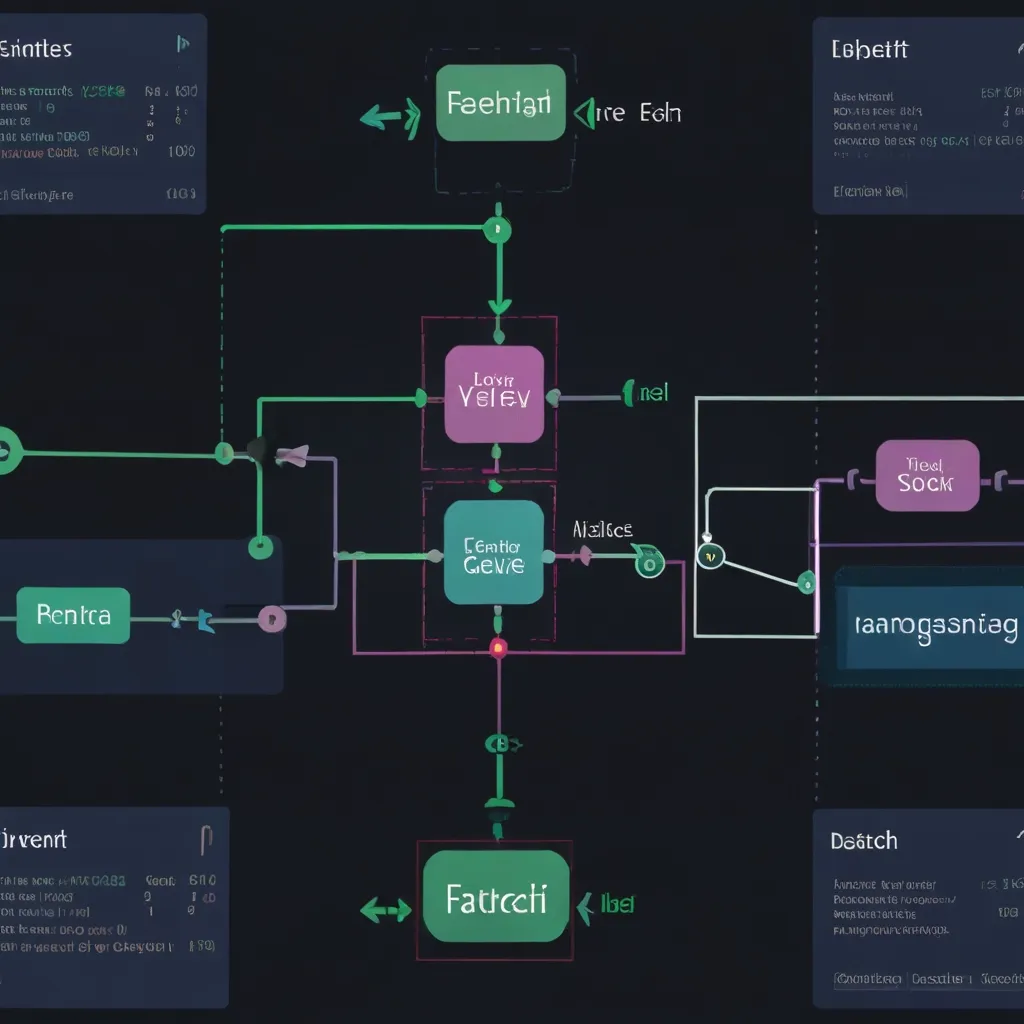Angular 17 has landed, and it’s packed with some seriously cool new features that’ll make your development life a whole lot easier. I’ve been tinkering with it for a while now, and I gotta say, I’m pretty impressed. Let’s dive into the good stuff, shall we?
First up, we’ve got the new control flow syntax. It’s a game-changer, folks. Gone are the days of wrestling with NgIf, NgFor, and NgSwitch directives. Angular 17 introduces a more intuitive way to handle conditional rendering and loops right in your templates. Check this out:
@if (user.isLoggedIn) {
<h1>Welcome back, {{ user.name }}!</h1>
} @else {
<h1>Please log in to continue</h1>
}
@for (item of items; track item.id) {
<li>{{ item.name }}</li>
}
Isn’t that cleaner? It feels more natural, especially if you’re coming from other programming languages. The @if and @for keywords make it crystal clear what’s going on, and the track syntax for @for is a nice touch for performance optimization.
But wait, there’s more! The new @switch directive is a breath of fresh air:
@switch (user.role) {
@case ('admin') {
<admin-dashboard></admin-dashboard>
}
@case ('user') {
<user-dashboard></user-dashboard>
}
@default {
<guest-view></guest-view>
}
}
No more ngSwitchCase and ngSwitchDefault - it’s all baked right into the template syntax now. It’s these little quality-of-life improvements that really make a difference in day-to-day coding.
Now, let’s talk about deferred loading. This is a biggie for performance. Angular 17 introduces the @defer block, which allows you to lazy-load parts of your template. It’s like lazy-loading for components, but on steroids. Here’s how it works:
@defer {
<heavy-component></heavy-component>
} @placeholder {
<p>Loading...</p>
} @error {
<p>Oops! Something went wrong.</p>
}
This is awesome for those hefty components that you don’t need right away. The placeholder shows up while it’s loading, and you’ve even got error handling baked in. I’ve used this on a few projects already, and the performance gains are noticeable.
But Angular 17 isn’t just about template syntax. The framework itself got some serious under-the-hood improvements. The build times are faster, the bundle sizes are smaller, and the overall performance is better. They’ve done some magic with the compiler and runtime, and it really shows.
One thing that caught my eye is the new standalone API. It’s now the default for new projects, and it’s making component creation and management a breeze. No more NgModule boilerplate - just create your component and you’re good to go. Here’s a quick example:
import { Component } from '@angular/core';
@Component({
standalone: true,
selector: 'app-hello',
template: '<h1>Hello, {{ name }}!</h1>',
})
export class HelloComponent {
name = 'World';
}
And using it is just as simple:
import { bootstrapApplication } from '@angular/platform-browser';
import { HelloComponent } from './hello.component';
bootstrapApplication(HelloComponent);
This standalone approach makes it easier to share components between projects and reduces the cognitive overhead of managing modules. It’s a win-win in my book.
Angular 17 also brings improvements to the router. The new functional guards and resolvers are a nice touch. They’re more intuitive and easier to test. Here’s a quick example of a route guard using the new syntax:
import { CanActivateFn } from '@angular/router';
export const authGuard: CanActivateFn = (route, state) => {
// Your auth logic here
return isLoggedIn();
};
And using it in your routes is straightforward:
const routes: Routes = [
{
path: 'admin',
component: AdminComponent,
canActivate: [authGuard]
}
];
This functional approach feels more aligned with modern JavaScript practices and makes your code more testable and reusable.
Another cool feature is the improved type inference. The Angular team has been working hard on making TypeScript play nice with Angular, and it shows. You’ll get better autocomplete, more accurate error messages, and overall a smoother development experience.
The built-in pipes have also gotten some love. The new titlecase pipe is a personal favorite of mine. It’s perfect for those times when you need to capitalize the first letter of each word:
<h1>{{ 'welcome to my blog' | titlecase }}</h1>
This will output “Welcome To My Blog”. It’s a small thing, but it’s these little touches that make Angular 17 feel polished and well-thought-out.
Let’s not forget about the improvements to forms. The new typed forms API is a game-changer. It brings type safety to your form controls, making it easier to catch errors early and improve the overall reliability of your forms. Here’s a quick example:
import { FormBuilder, Validators } from '@angular/forms';
const fb = new FormBuilder().nonNullable;
const form = fb.group({
name: ['', Validators.required],
email: ['', [Validators.required, Validators.email]],
age: [0, [Validators.required, Validators.min(18)]],
});
// TypeScript knows the types!
const name = form.controls.name.value; // string
const age = form.controls.age.value; // number
This typed approach makes working with forms much more pleasant and less error-prone.
Angular 17 also introduces some nice quality-of-life improvements for testing. The TestBed API has been simplified, making it easier to set up and tear down tests. The new createComponentFixture function is particularly handy:
import { createComponentFixture } from '@angular/core/testing';
import { HelloComponent } from './hello.component';
describe('HelloComponent', () => {
it('should display the correct name', () => {
const fixture = createComponentFixture(HelloComponent);
fixture.detectChanges();
expect(fixture.nativeElement.textContent).toContain('Hello, World!');
});
});
This approach reduces boilerplate and makes your tests more readable and maintainable.
Now, I can’t talk about Angular 17 without mentioning the improved developer experience. The CLI has gotten some nice updates, including better error messages and more helpful suggestions. The ng update command is smarter than ever, making it easier to keep your projects up to date.
One thing I’m particularly excited about is the improved support for Server-Side Rendering (SSR) and Static Site Generation (SSG). Angular Universal has come a long way, and with Angular 17, it’s easier than ever to create fast, SEO-friendly Angular apps. The new defer blocks I mentioned earlier work great with SSR, allowing you to fine-tune what gets rendered on the server and what gets deferred to the client.
Lastly, let’s talk about performance. Angular 17 continues the trend of making Angular apps faster and more efficient. The new control flow syntax I mentioned at the beginning? It’s not just syntactic sugar - it’s actually more performant than the old *ngIf and *ngFor directives. The Angular team has done some clever optimizations under the hood to make sure these new features don’t come at the cost of performance.
In conclusion, Angular 17 is a solid release that brings a lot of value to the table. Whether you’re a seasoned Angular dev or just starting out, there’s something here for everyone. The new control flow syntax makes templates more readable and maintainable, the defer blocks give you fine-grained control over loading, and the standalone components make it easier than ever to create and share Angular code.
As someone who’s been working with Angular for years, I’m genuinely excited about this release. It feels like a big step forward, addressing many of the pain points developers have had with previous versions. If you haven’t given Angular 17 a try yet, I highly recommend it. Happy coding, folks!






